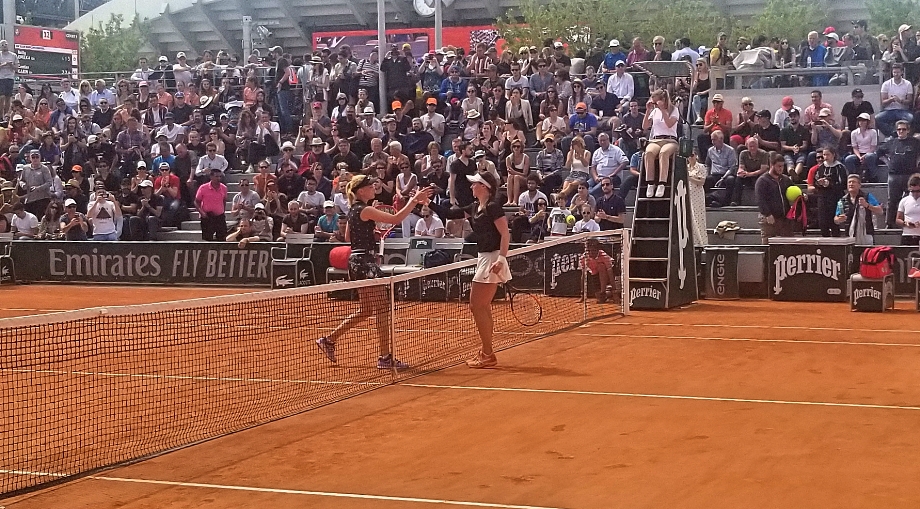23rd-seeded Donna Vekic entered her first-round encounter against Liudmilla Samsonova as a heavy favorite on paper and the scoreboard at the end of the match, 6-2 6-4 in her favor, seemed to accurately reflect that forecast. Nonetheless, it must be noted that her pre-match “favorite” tag was probably based on different reasons than why she actually won so convincingly.
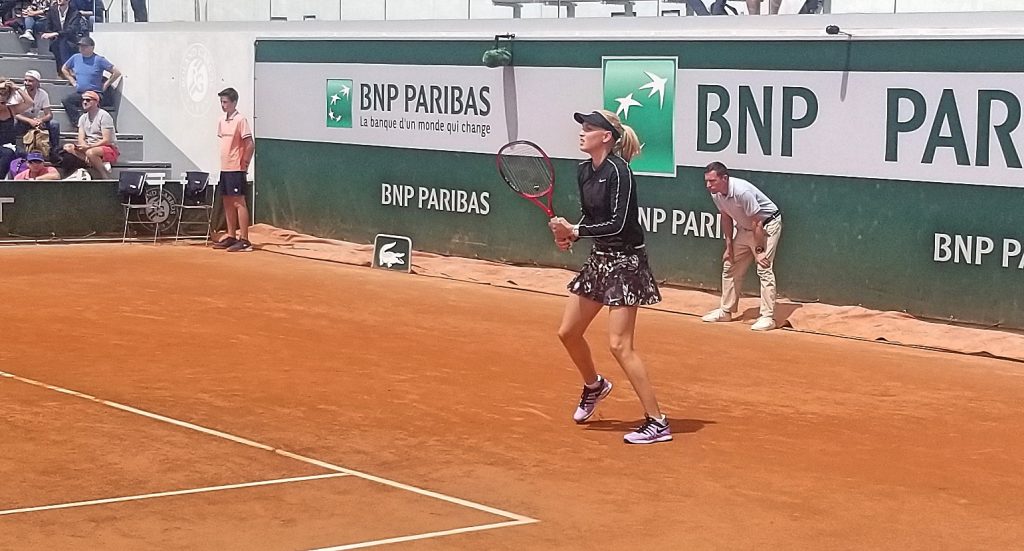
Samsonova, ranked no. 159 in the WTA, was playing in the main draw of a Major for the first time in her life and her most notable accomplishments to date have come on the ITF tour. It only seemed to make sense that Vekic would step on Court 7 on Monday as the clear favorite, even without taking into account possible match-up issues in terms of style and tactical play. Isn’t that how upsets often take place anyway? The more accomplished A player looks to be the favorite on paper, but due to the game-related match-up problems posed by Player B (the so-called “lesser” opponent), things take a strange turn and before you know it, an upset is brewing.
Unfortunately for Samsonova, it was the favorite who posed those match-up problems rather than the underdog in this case.
Both players sought to control rallies with their forehands, but Vekic’s forehand was a tad more accurate and less erratic than Samsonova’s. When both players had opportunities to step inside the baseline and accelerate their forehands for winners, Samsonova struggled with high sitters** while Vekic produced winners anytime she could step in and nail her forehand. To compound that particular problem, Vekic used variety on her ground strokes – loopy topspin floaters, drop shots, angles – while Samsonova struck the ball with pretty much the same velocity throughout the match, hardly ever throwing Vekic off her rhythm.
**As examples of high-forehand errors on sitters by Samsonova, see the 30-30 point at 1-5 in the first set, the 15-30 point in the first game of the second set, the break point at 1-1 that ended the game (photo below), and the first point of the 4-5 game.
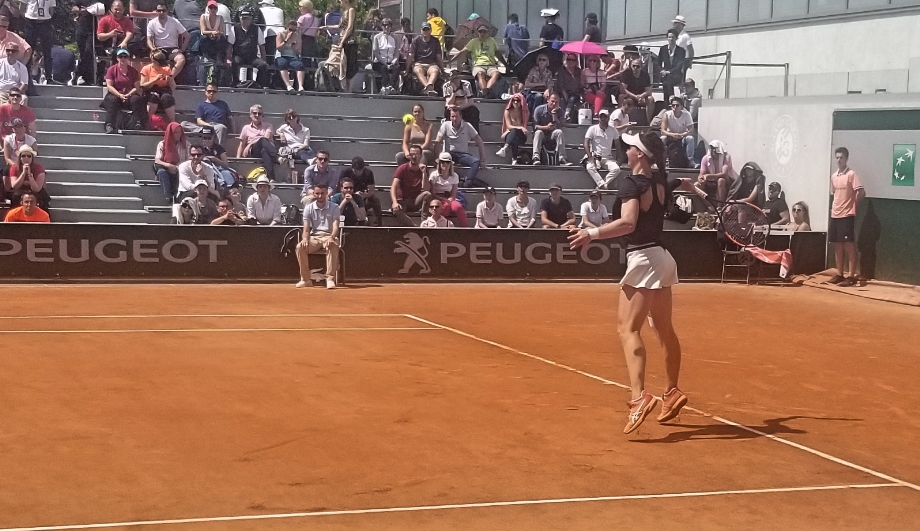
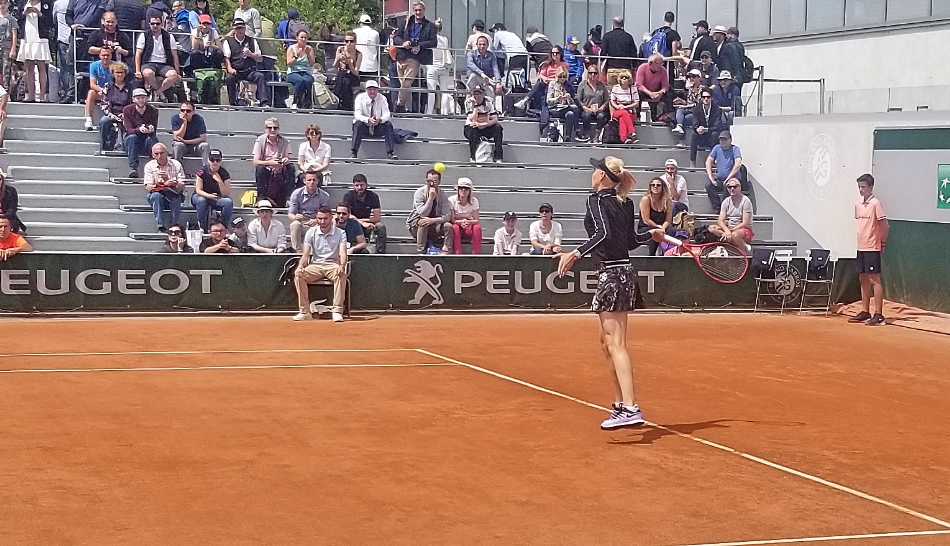
Most notably, Vekic had the quicker footwork which, by extension, gave her a distinct advantage in this baseline duel between two players with somewhat similar game plans. Whenever Samsonova hit a terrific, aggressive shot to the corners, Vekic was able to scramble, stretch, and counterpunch (or loop it back from either corner), causing Samsonova to hit harder and harder just to end the point. However, they frequently ended in an unforced error by her, resulting from the frustration of seeing so many balls come back over the net. Samsonova finished the match with 19 unforced errors (by my count – as my regular readers may know by now, I prefer to keep the unforced error count myself) just on her forehands, four more than the total number of unforced errors for Vekic.
In contrast, when Vekic put Samsonova on defense, she was able to force the Russian into an error a lot quicker. Samsonova did not fare nearly as well as Vekic did (the gap between the two with regard to first-step explosion was visible in these points) when they had to cover a large area of the court and run balls down, or react to hard and flat strikes by the opponent**.
**The deuce point in the 2-1 game and the first point of the ensuing 3-1 game in the first set are emblematic examples of this distinction.
Don’t let the lop-sided result – or most of my analysis above – mislead you though. Samsonova may have faced an insurmountable match-up problem on Monday, but she can (and will, sooner than later in my opinion) cause nightmares to top 50 players. The firepower on her ground strokes is noteworthy and she possesses a great combination of first and second serve. Her first serve is quite imposing and her second serve, far from being a liability, can have a nasty kick to the outside on the ad-court. I am tempted to say that Samsonova’s game would be more dangerous on faster surfaces because of her serve and the high-octane potential on her groundies but I cannot be certain yet. She uses big, loopy backswings on both sides (see photos below) so I prefer to see a couple of more matches – from beginning to end – on different surfaces – and in WTA events – before I can comfortably comment on that detail.
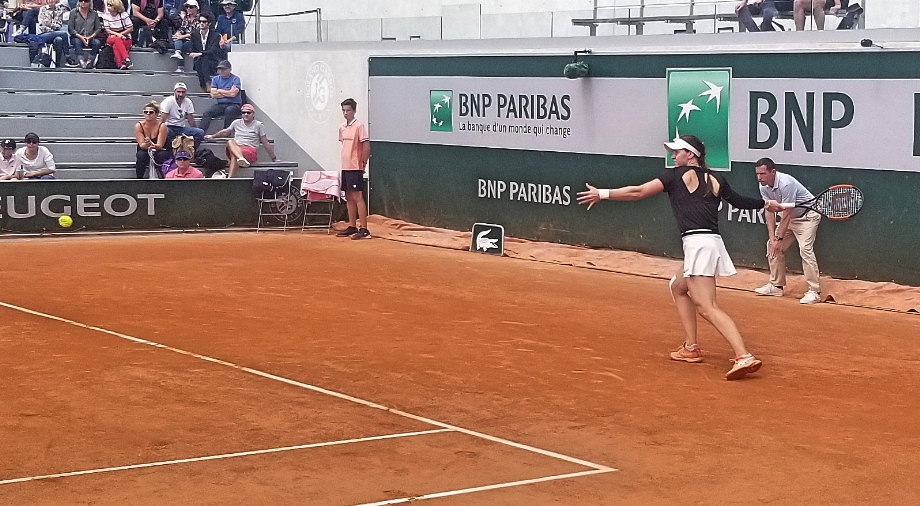
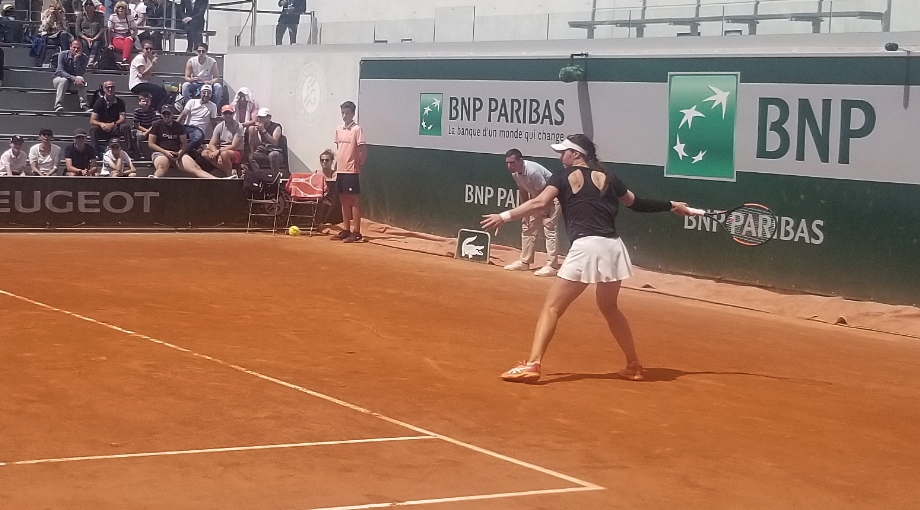
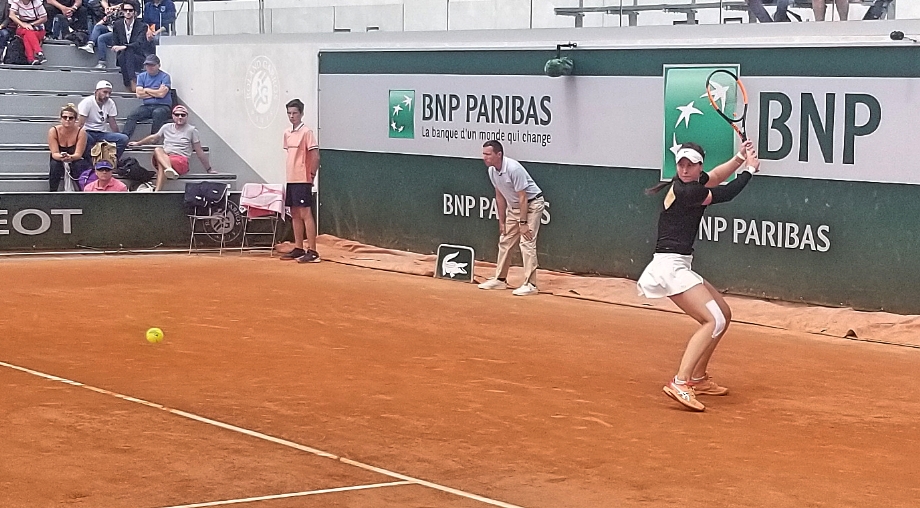
Suffice it to say that a few holes in Samsonova’s game may need to be filled, but at 20 years old, time is on her side. In my opinion, she should be considered a player to watch in early rounds of WTA events. As for Vekic, she will look to carry her consistency and footwork into her second-round encounter vs. Rebecca Peterson of Sweden.
